What are the most primitive needs of a human that are of paramount importance apart from food and shelter? Communication and the capacity to fully immerse oneself in a type of environment is what makes a person happy and full of life. But due to COVID, the human race has experienced an outrageous downfall in terms of interaction, communication, and exploration. Complete lockdown of publicly owned urban spaces since March 2020 has tremendously affected our mental health. But, as designers and, more importantly, as humans, we are advancing day by day to regenerate interactive public spaces by keeping in mind the safety measures.
There are plenty of examples that substantiate the growth of interactive spaces in the urban sector and guide architects, planners and designers towards a more secure and sustainable future.
Brooklyn’s Domino Park | Interactive Spaces
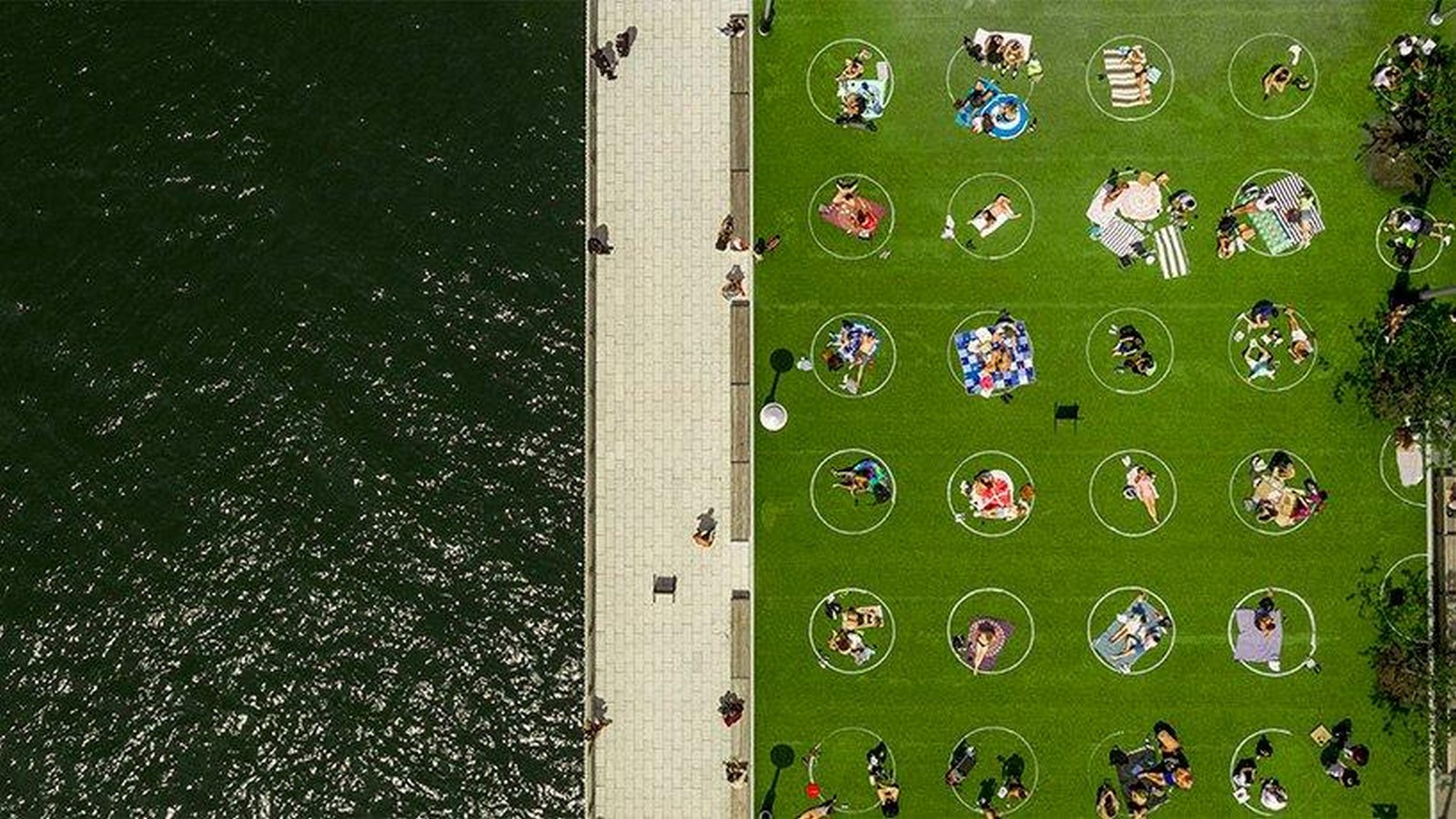
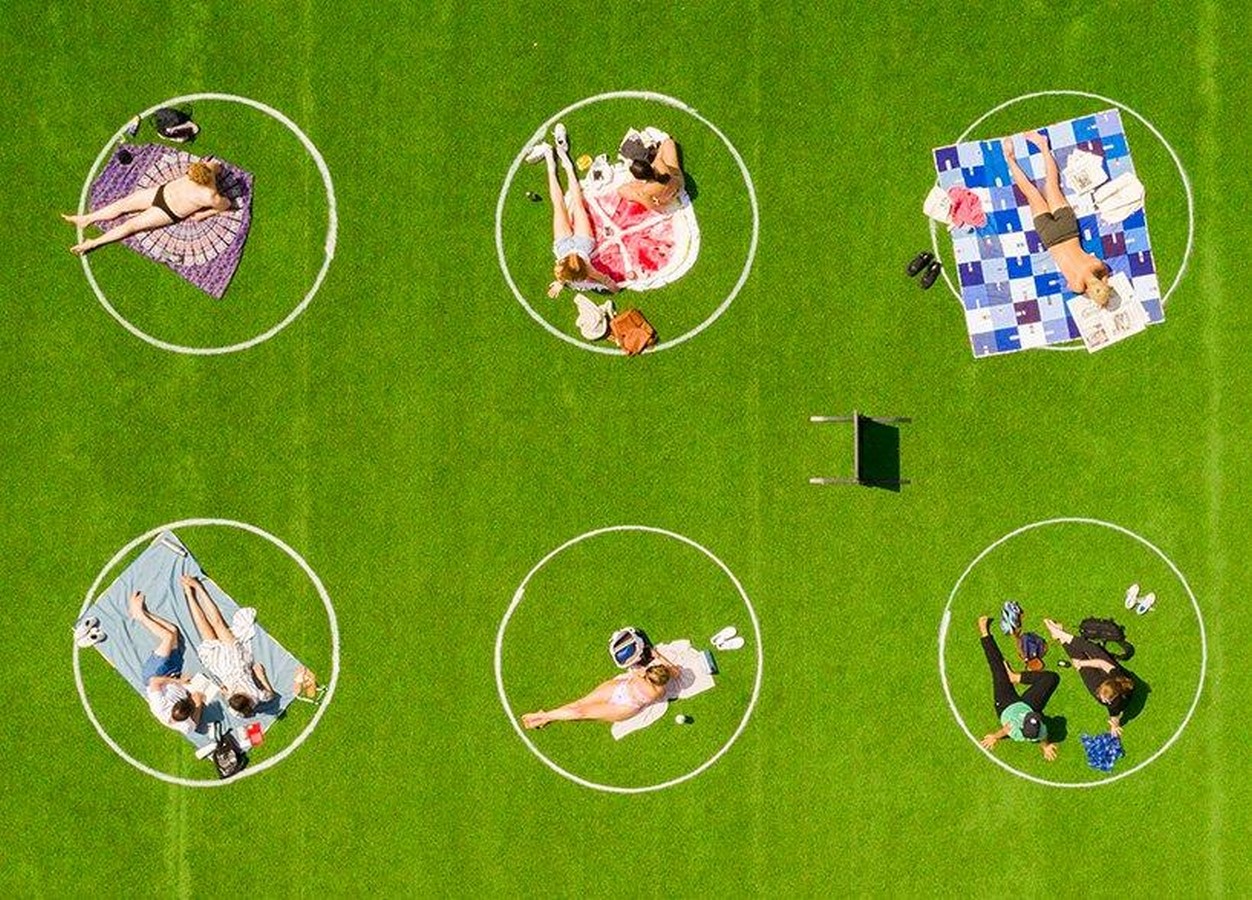
Brooklyn’s Domino Park, Brooklyn, New York City, NY, was opened in 2018, which is a highlight in the Big Apple because of the mind-blowing and serene waterfront along with breath-taking and iconic Manhattan skyline. This quarter-mile waterfront park is designed by James Corner Field Operations.
To ensure reinforcement of safety guidelines due to Corona, this park has initiated the design of interactive spaces in the most simple ways by providing circular zones for each person/family/couple etc. This not just makes one safe but also manifests the concept of a communicating urban space.
Artistic and Visual Approach
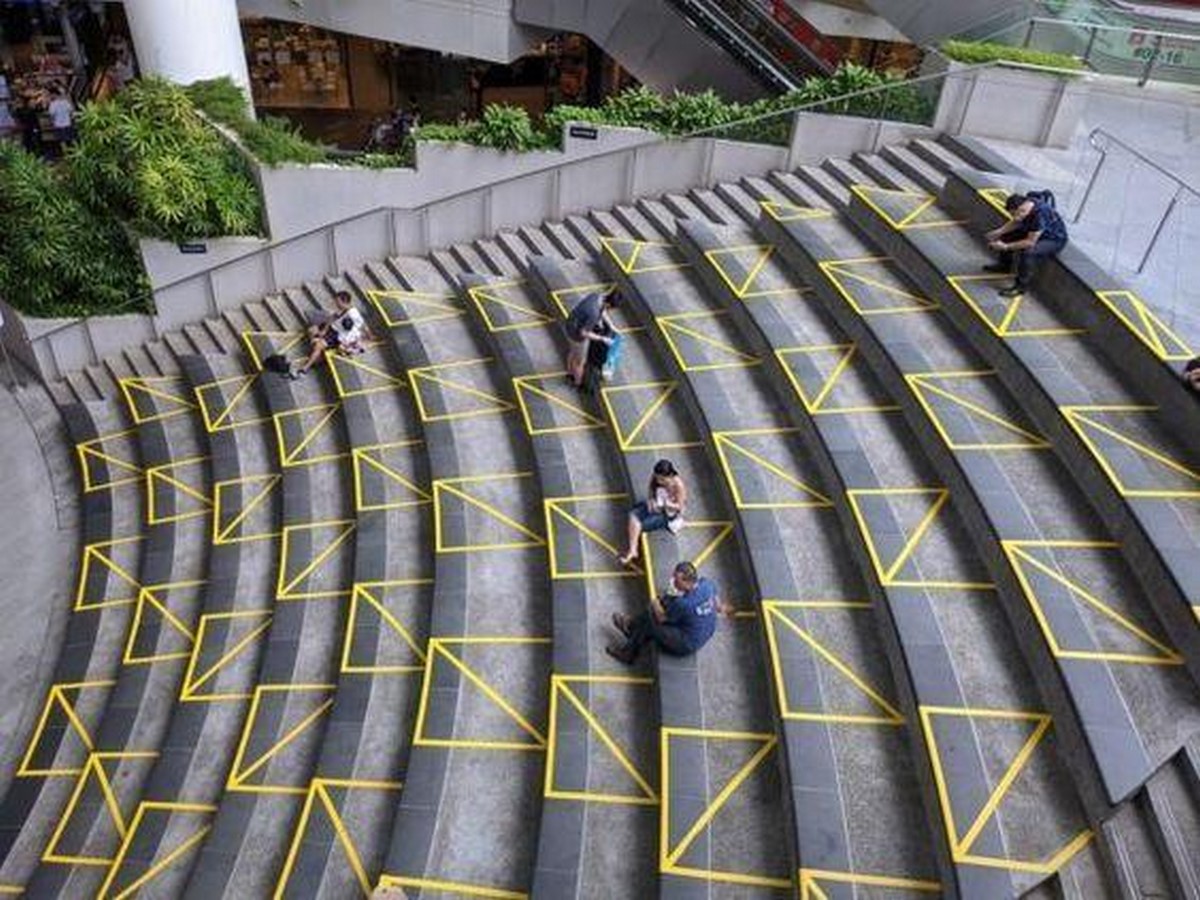
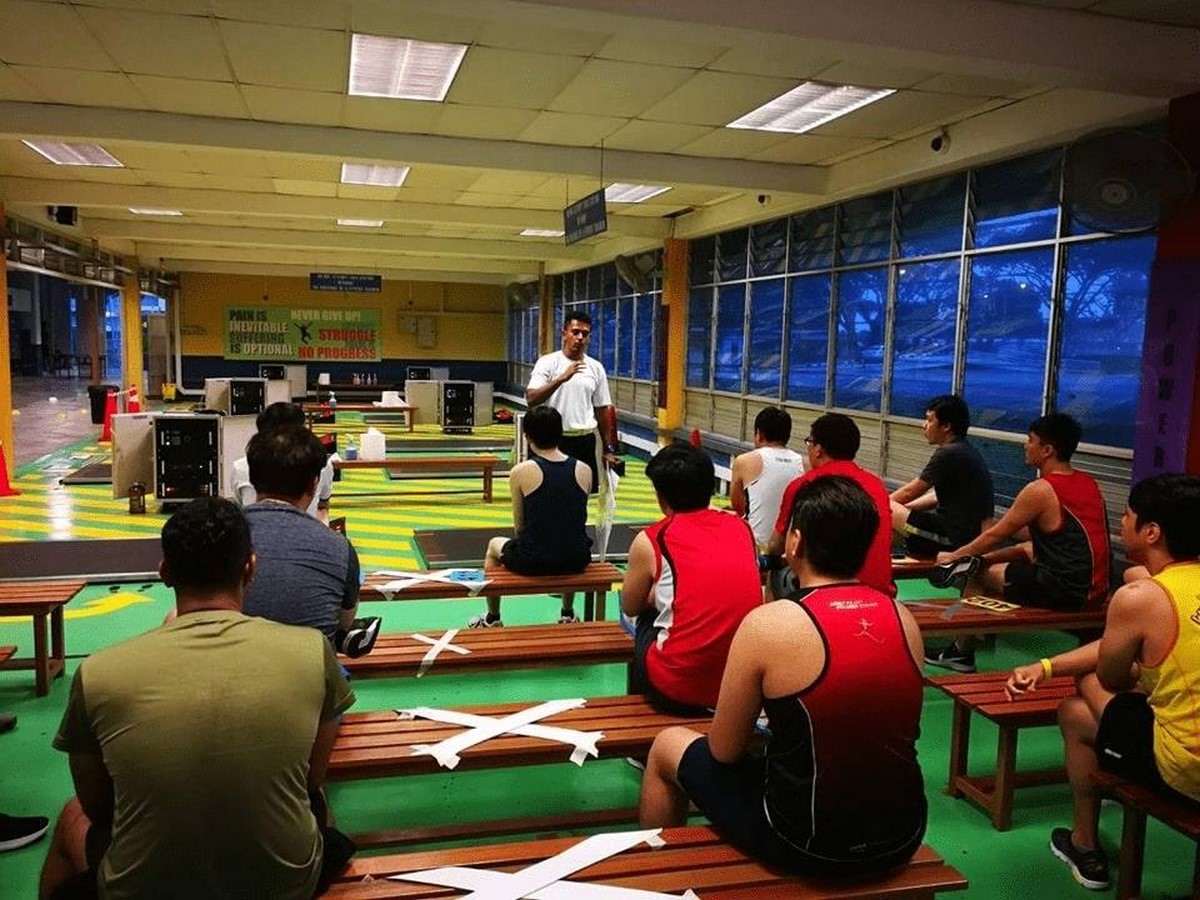

Singapore is redefining its public spaces in the most basic and creative way. What’s better than space which speaks in terms of colours? Colourful tapes and elementary geometric shapes seem to be a successful ongoing approach to establish COVID guidelines.
These colour-defined 6′ apart spaces can be seen in public parks, schools, privately owned public spaces, and all the interactive spaces. It is not just the public spheres that are being transformed but also the military. The Individual Physical Proficiency Test (IPPT) is an integral part of military services in Singapore, where one can see the COVID guidelines being followed strictly.
Urban Gardens

There is nothing better than an urban space that defines itself in the most basic sense. The Contemporary Art Gallery in Elblag, Poland, has been turned into a very interactive social distancing urban space. Director Adriana Kotynska of the Contemporary Art Gallery had to find a creative solution for the Gallery since, after the Corona outbreak, it has been undeniably difficult to attract the public to such a common public space.
So, the solution was simple, the entire lawn covered with overgrown grass was shaped into a massive green checkerboard. It is human instinct to automatically know where to proceed and where not to. This example is a perfect demonstration of interactive spaces in post-pandemic times, plus it looks so mesmerizing.
Is our will to live defined by and narrowed down to lines and grids?
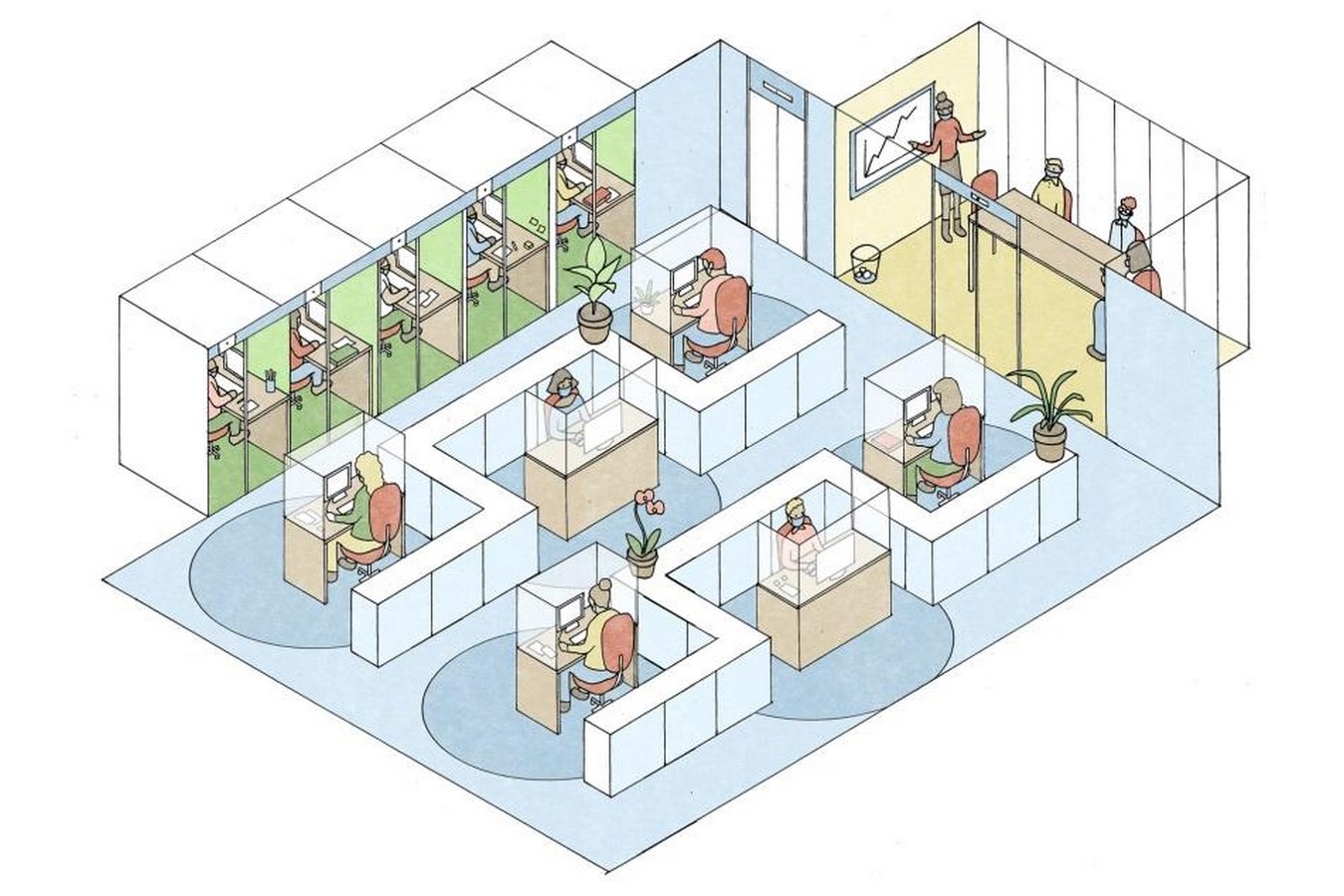
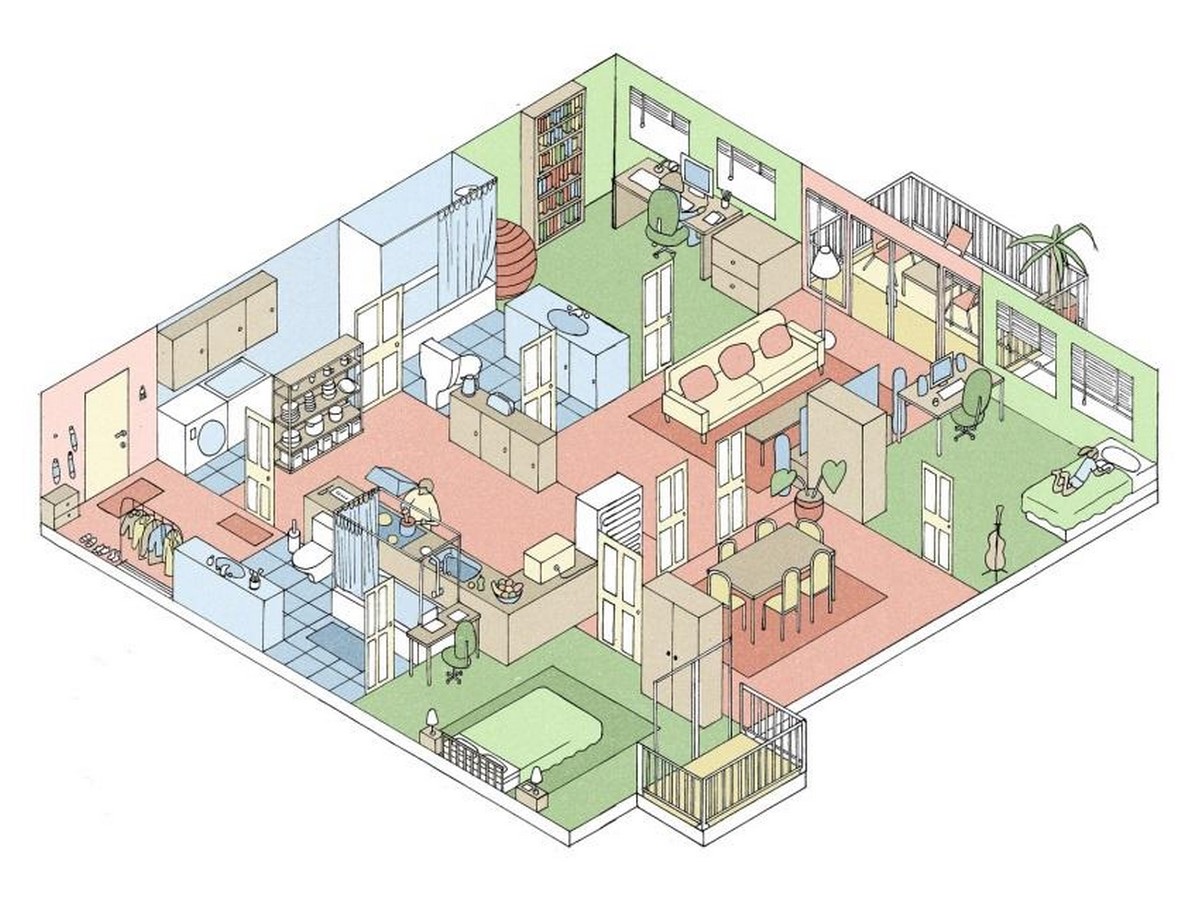
What to expect from the future? Will we all execute our desires while functioning like robots or will we get opportunities to live the way we did pre-pandemic? The core feature that makes the entire human race extremely superior is the ability with which humans create and develop their living spaces in the most creative ways. So, it is entirely up to us how we take up the responsibility to enrich and strengthen these spaces.
Space Availability
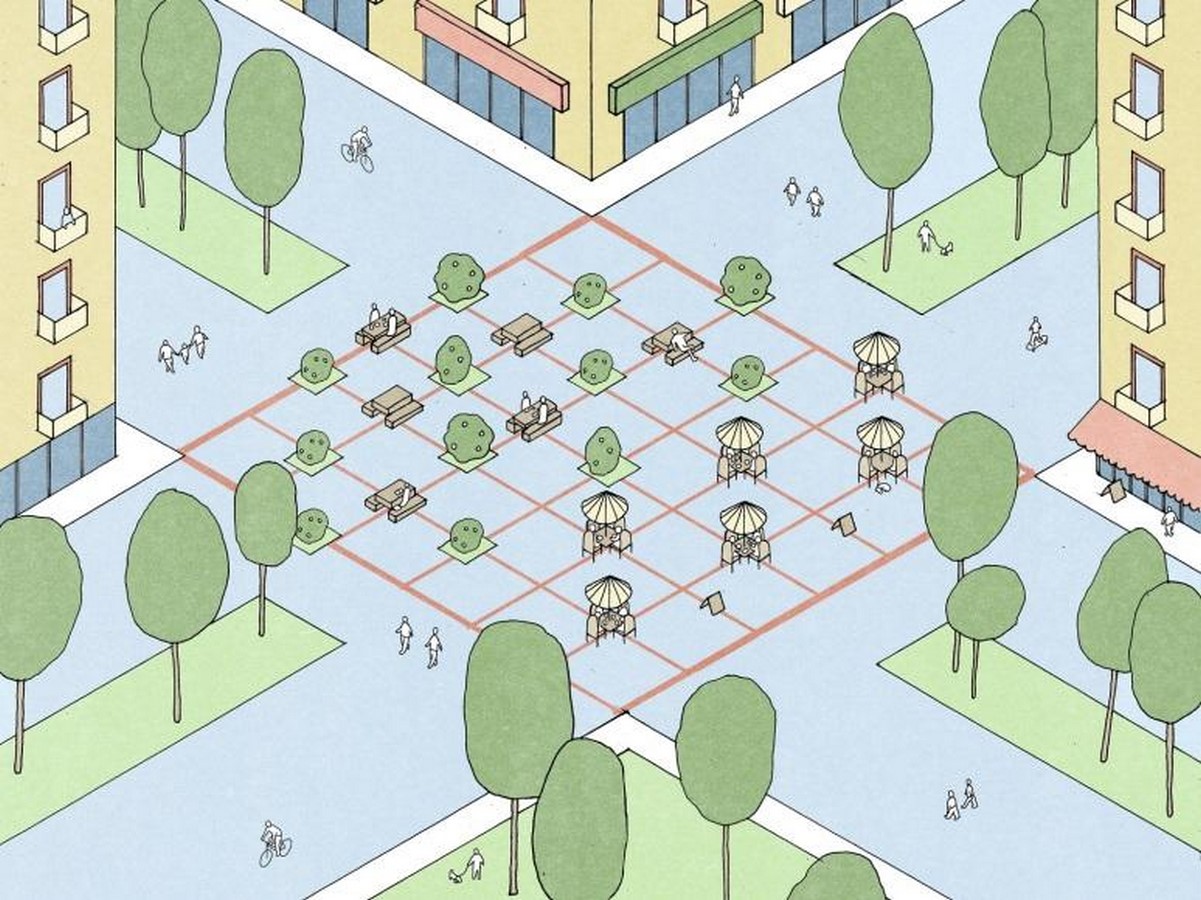
With the 6′ apart social distancing guideline, all publicly and privately owned spaces are being expanded at a great rate which in turn exceeds land usage area, and with increasing population, it is almost impossible to have these open spaces in the near future. Expansion of spaces leads to the non-availability of land and increased prices. Building vertical cities is an acceptable building feature, but an interactive space is supposed to be designed openly or else how will one be close to nature? Nature is the prime source that guides us to the best possible opportunities.
Maximizing Proficiency and Minimizing Needs | Interactive Spaces

Pandemic has made most of us inefficient and lazy but has also made us respect and appreciate the little things in life, which have made all of us grateful. So, as the most powerful race on the planet, nature demands us to utilize our resources and technical abilities for the best of humankind. With time we are amplifying our needs without concerning other basic requirements.
Space speaks for itself, no matter how big or small it is. Urban Design and Landscaping are the fundamental architecture practices that can divert or guide the human brain with the simplest of techniques. Just a slightly different colour or shape, change in volume, etc., is enough to transform an interactive space that makes all of us feel and behave a certain way. But how sincere and aware we are of our responsibilities is all that matters? Because no initiated design idea could be perfect until and unless we promptly follow the guidelines and function exactly according to the safety measures.
References
www.downtoearth.org.in. (n.d.). COVID-19 and green, open spaces: What is going to be our new normal? [online] Available at: https://www.downtoearth.org.in/blog/urbanisation/covid-19-and-green-open-spaces-what-is-going-to-be-our-new-normal–71501 [Accessed 21st Jul. 2021].
Matador Network. (n.d.). In Singapore, colorful tape is turning social distancing guidelines into art. [online] Available at: https://matadornetwork.com/read/singapore-colorful-tape-turning-social-distancing-guidelines-art/?epik=dj0yJnU9WkIwRGNwWllxSEFqbWpwMzdsamFhMGVlcGpYbFdFbTImcD0wJm49ZF85ZldXUDlsYWdoZU1BTVUxQk8tdyZ0PUFBQUFBR0Q4OXJn [Accessed 21st Jul. 2021].
Chayka, K. (2020). How the Coronavirus Will Reshape Architecture. The New Yorker. [online] 17 Jun. Available at: https://www.newyorker.com/culture/dept-of-design/how-the-coronavirus-will-reshape-architecture.











